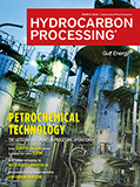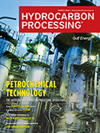Dow announces plan to build world's first net-zero carbon emissions ethylene and derivatives complex
Dow announced today its plan to build the world's first net-zero carbon emissions integrated ethylene cracker and derivatives site with respect to scope 1 and 2 carbon dioxide emissions.
The project would more than triple Dow's ethylene and polyethylene capacity from its Fort Saskatchewan, Alberta site, while retrofitting the site's existing assets to net-zero carbon emissions. The organic, brownfield investment would significantly increase Dow's capacity of advantaged ethylene, polyethylene and derivatives manufactured across Alberta – all while maintaining Dow's enterprise-level commitment to keep capital expenditures at or below depreciation and amortization (D&A) levels. The Company expects to allocate approximately $1 billion of capex annually – or approximately 1/3 of its D&A levels – to decarbonize its global asset base in a phased, site-by-site approach.
Dow expects the new brownfield ethylene cracker to add approximately 1.8 million metric tons of capacity in a phased manner through 2030, and along with derivatives capacity and site retrofit investments, will enable the Company to produce and supply approximately 3.2 million metric tons of certified low- to zero-carbon emissions polyethylene and ethylene derivatives for customers and joint venture partners around the globe.
The investment, which is subject to approval by Dow's Board of Directors and various regulatory agencies, would decarbonize approximately 20 percent of Dow's global ethylene capacity while growing polyethylene supply by about 15 percent and supporting approximately $1 billion of EBITDA growth across the value chain by 2030. Further, Dow estimates that the project can be completed with an approximately 15 percent lower capital intensity than Dow's industry-leading Texas-9 cracker and derivative units.
"This investment builds on Dow's strong leadership position and allows us to meet the increasing needs of customers and brand owners seeking to lower the carbon footprint of their products," said Chairman and CEO Jim Fitterling. "Our advantaged position and disciplined approach to capital investment makes us well positioned to lead the industry in decarbonizing, growing and accelerating Dow's path toward carbon neutrality."
The project would build on Dow's previous success in reducing the carbon emissions intensity of its manufacturing fleet. Texas-9 in Freeport, Texas, Dow's most recently commissioned cracker, has delivered a greater than 15 percent return on invested capital since startup and currently operates at 65 percent lower conversion cost and up to 60 percent lower carbon dioxide emissions intensity than the average cracker in Dow's fleet as well as 20 percent lower capital cost versus the industry. The asset leverages best-in-class technology, including a highly efficient furnace design with optimized integration with other facilities on site, that significantly reduces energy consumption and carbon dioxide emissions.
The production process at Fort Saskatchewan will convert cracker off-gas into hydrogen as a clean fuel to be used in the production process, and carbon dioxide that would be captured onsite to be transported and stored by adjacent third-party CO2 infrastructure.
The products produced at the site will be used across the globe to help deliver low- to zero-carbon emissions solutions to meet customers' sustainability needs. Dow is focused on serving high growth markets that support human well-being, drive industrial efficiency, and enable the world's energy transition.
Dow selected the Fort Saskatchewan site for this investment as the region offers a highly competitive energy and feedstocks position. The region also features access to available third-party CO2 infrastructure.
"Today's announcement from Dow is fantastic news for Alberta's economy. If this project proceeds, it could represent one of the largest job-creating investments in Alberta in over a decade," said Jason Kenney, Premier of Alberta. "By choosing Alberta to host the world's first net-zero carbon emissions ethylene plant, Dow is highlighting our growing global leadership in emissions-reducing technology like carbon capture utilization and storage, and Alberta's open for business policies."
"Alberta's support for circular hydrogen and CO2 infrastructure are essential to enabling us to develop this net-zero carbon emissions manufacturing facility," said Fitterling. "Canada's support for this type of investment can serve as a model for how government investment can encourage the development and accelerate adoption of emissions-avoiding technologies and solutions."
This investment aligns with Dow's broader targets to achieve carbon neutrality by 2050, eliminate plastic waste in the environment and increase its positive impacts on customers, business and society. It also supports Dow's commitment to reduce its net annual carbon emissions by an additional 15 percent, reducing net annual carbon emissions by approximately 30 percent by 2030 (since 2005). Today, Dow is among the top 20 global corporations for clean energy purchases, with more than 850 MW.






Comments